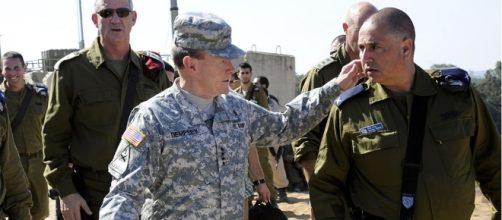U.S. and South Korea's joint military drills always seem to provoke North Korea. The next exercises, scheduled to commence on Monday, August 21, may trigger more provocation from Pyongyang, following the series of threats from U.S. President Donald Trump to unleash “fire and fury” and North Korea’s delayed decision to launch missiles toward the Pacific island of Guam.
The joint military exercises are also known as Ulchi Freedom Guardian and will be the first drills between the Washington and Seoul since the successful launch of two intercontinental ballistic missiles (ICBM) by Pyongyang in July and North Korea’s threat to fire four missiles close the U.S.
Pacific territory of Guam.
Calls for suspension of the joint drills
Despite the calls from China and others to suspend the exercises to ease the escalating tension on the Korean Peninsula, U.S. and South Korean officials insist on moving ahead with the military drills as planned. The annual exercises began in the 1970s and involved more than 25,000 U.S and about 50,000 South Korean troops in last year’s event. They are characterized by computer simulations aimed at preparing, planning and improving command operations.
Analysts say that the allies might try as much as possible to make this year’s exercises low-key by not deploying U.S. strategic assets and long-range bombers to the troubled region.
However, some experts say that possibility would not be comfortable for the allies, who argue that it could send the wrong signal to both Pyongyang and Seoul, where there are growing fears that North Korea’s advancing missile capabilities may actually undermine the U.S.-South Korean alliance.
North Korea’s anger
The reclusive North Korea that usually condemns the drills and describes it as Rehearsals For War might respond aggressively with its own displays of military prowess. During last year’s exercises, Pyongyang successfully launched a submarine ballistic missile that leader Kim Jong-Un praised as a huge success. In July, the communist state test-fired its fifth and most advanced nuclear test, which experts said was capable of conveying a nuclear warhead that could hit the U.S. mainland.
However, it is quite certain this year’s exercises will trigger some kind of provocative reactions from Pyongyang. The concern of many observers is how strong it could be.
Some analysts are of the opinion that North Korean leader Kim Jong-Un is only interested in testing its new bargaining power against the U.S. with its newly developed long-range ballistic missile and likely has little interest in heightening tension during the exercises.


